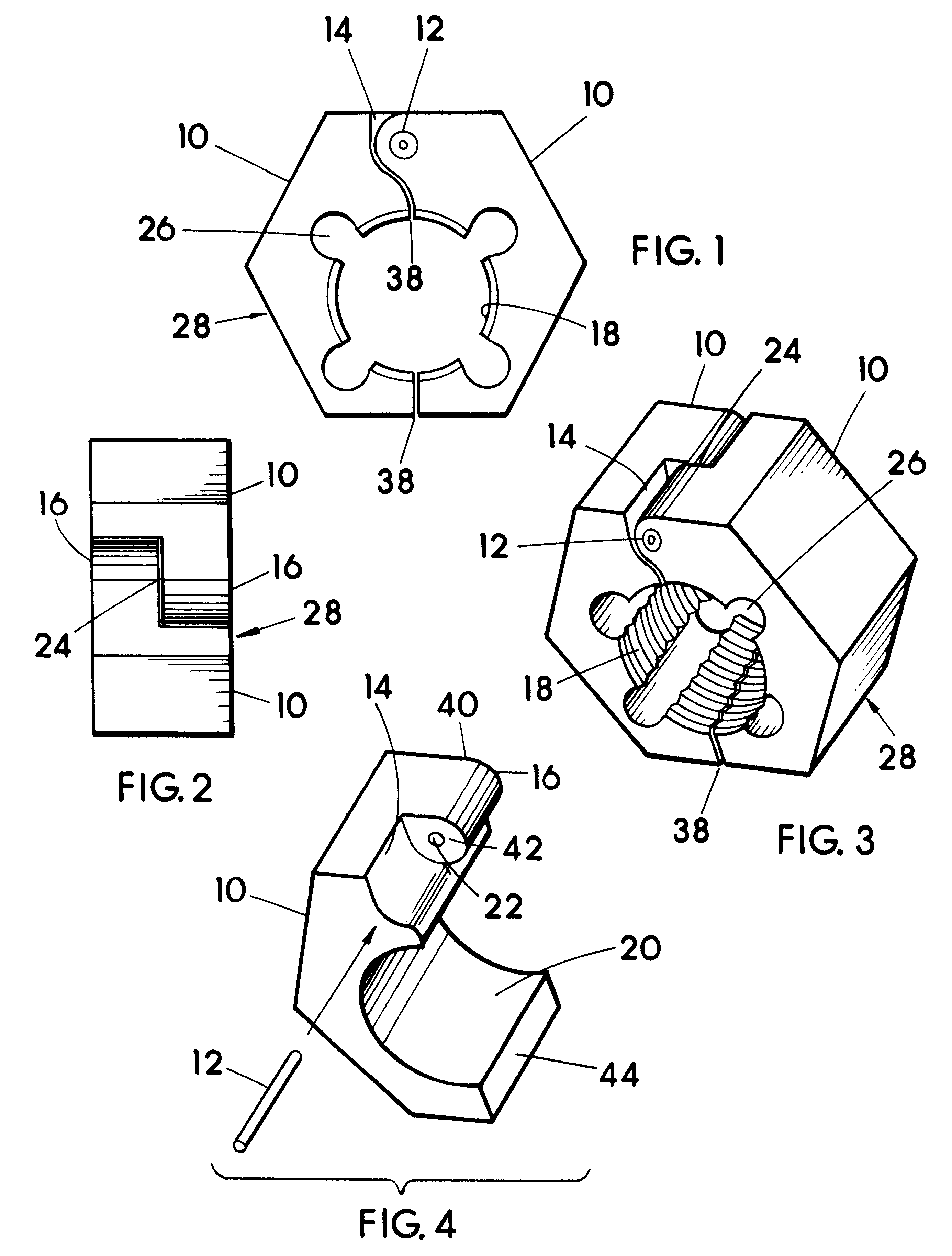Thread chasing tool and method
a thread chasing and thread technology, applied in the field of chasing threads, can solve the problems of affecting etc., and achieves the effect of reducing the cost of forged tools, and improving the quality of forged tools
- Summary
- Abstract
- Description
- Claims
- Application Information
AI Technical Summary
Problems solved by technology
Method used
Image
Examples
Embodiment Construction
Referring now to FIGS. 1-8, the pivoting split die 28 comprises a pair of opposing and identical main body members or halves 10 each made of a rigid strong metal material. Each main body half 10 being identical to the other allows for a substantially lower cost of manufacturing of die 28 compared to if the halves were not identical, and this due to reduced tooling to be made (one cavity or die stamp or the like needed) and less possible confusion in that there are not any left and right halves to keep track of and mated or matable in the manufacturing of die 28. The body halves 10 when flipped or opposed relative to one another and assembled together define the pivoting split die 28 in general. The "flipped" position may be seen in FIG. 2, and also from examining FIGS. 3-4, 6, wherein the ears 16 are cooperatively mated and the terminal ends 44 are adjacent one another. The pivoting split die 28 may be said to have a front face and an oppositely disposed back face, also identical to...
PUM
| Property | Measurement | Unit |
|---|---|---|
| thickness | aaaaa | aaaaa |
| diameters | aaaaa | aaaaa |
| thicknesses | aaaaa | aaaaa |
Abstract
Description
Claims
Application Information
 Login to View More
Login to View More - R&D
- Intellectual Property
- Life Sciences
- Materials
- Tech Scout
- Unparalleled Data Quality
- Higher Quality Content
- 60% Fewer Hallucinations
Browse by: Latest US Patents, China's latest patents, Technical Efficacy Thesaurus, Application Domain, Technology Topic, Popular Technical Reports.
© 2025 PatSnap. All rights reserved.Legal|Privacy policy|Modern Slavery Act Transparency Statement|Sitemap|About US| Contact US: help@patsnap.com



